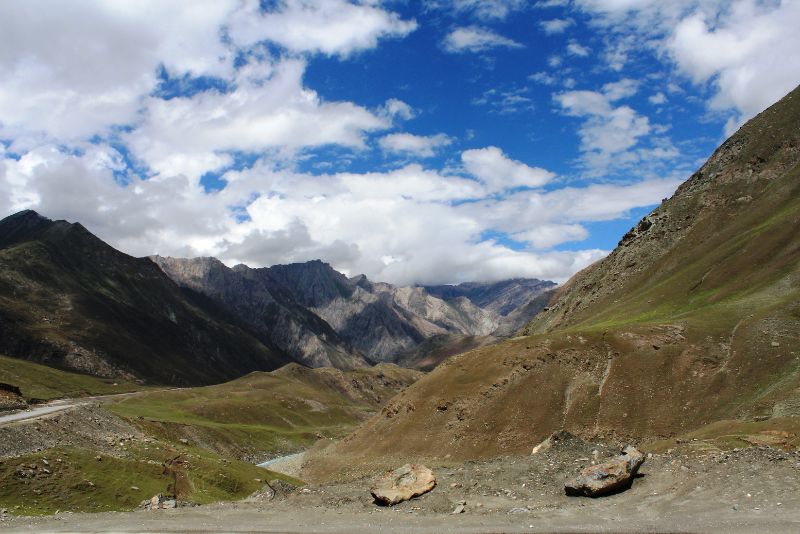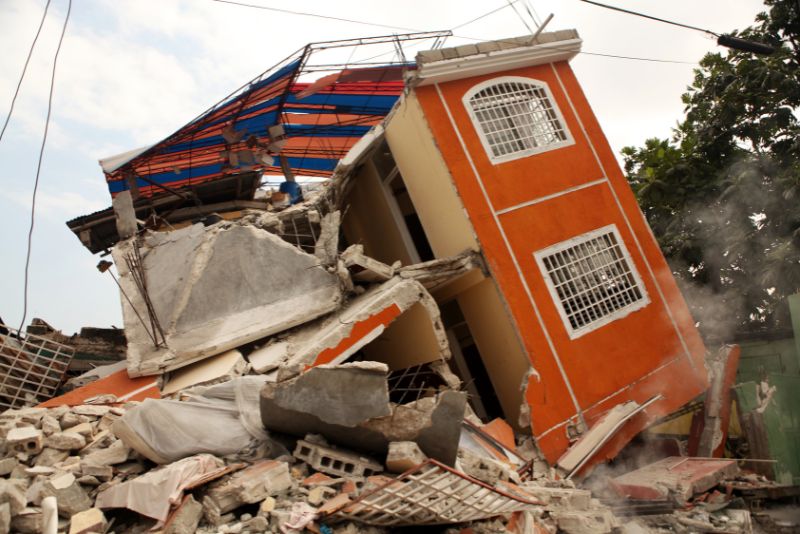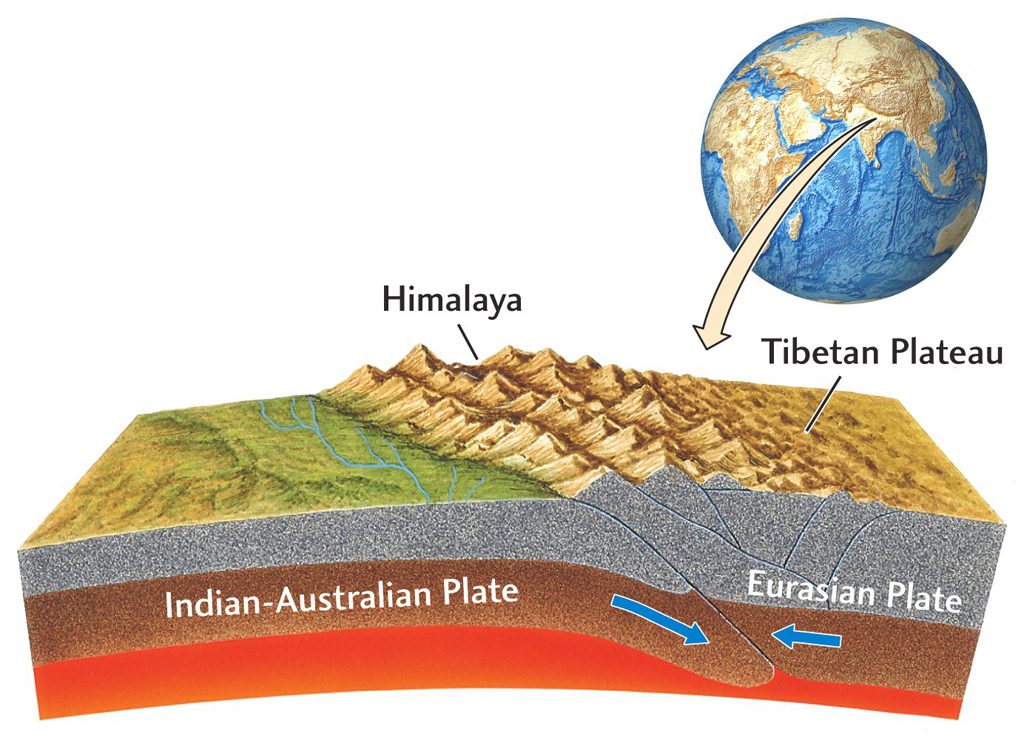
Earthquake in Himalayan Region
On the 21st of March, a strong tremor from Badakhshan earthquake of magnitude 6.6 in Afghanistan was felt by people from several north Indian states. Despite the Himalayan region being recognized for its natural beauty and cultural diversity, it is one of the most seismically active regions globally. The frequent earthquakes in this area pose a significant threat to the safety and well-being of the people living there. Therefore, this article aims to explore the vulnerabilities of the Himalayan region and the impact of frequent earthquakes on it.
Geology of the Himalayan Region
Located at the boundary of the Indian and Eurasian plates, the Himalayan region is where these two plates meet, forming the Himalayan mountain range. The high seismic activity of the area is a result of the collision of these plates, leading to tectonic movements. The Himalayan region is also prone to landslides and glacial lake outburst floods triggered by seismic activity.
Vulnerabilities of the Himalayan Region

Millions of people call the Himalayan region home, and the frequent earthquakes in this area pose a significant threat to their safety and well-being. Despite the region’s high population density, many buildings cannot withstand seismic activity, thereby exacerbating the vulnerability of the region. The lack of proper infrastructure and building codes worsens the situation. The Himalayan region is also prone to landslides and glacial lake outburst floods, which can cause significant damage to infrastructure and the economy. Additionally, they pose a threat to human life.

Impact of Frequent Earthquakes on the Himalayan Region
Frequent earthquake in Himalayan region significantly impact the region’s inhabitants. The damage to infrastructure such as roads, bridges, and buildings is one such consequence. This infrastructure damage can disrupt the economy and make it difficult for people to access essential services. The lack of proper infrastructure and building codes also makes the region more vulnerable, making it challenging to prepare for and respond to seismic events. Furthermore, earthquakes can lead to loss of life and injuries, and the lack of proper infrastructure and building codes exacerbates this vulnerability.
You may also read: Pre-Monsoon Deluge: East and Northeast India to Receive Heavy Rainfall
Mitigating the Impact of Earthquakes in the Himalayan Region
To mitigate the impact of earthquake in Himalayan region, a comprehensive approach is needed that involves multiple stakeholders. To ensure structures can withstand seismic activity, building codes must be updated and enforced. Additionally, the region’s infrastructure needs improving to make it more resilient to earthquakes and landslides. Community preparedness is also essential in mitigating the impact of earthquakes. Educating the community on what to do during seismic activity can significantly reduce the risk of loss of life and injuries.

Future Considerations for the Himalayan Region
The Himalayan region is one of the most seismically active regions in the world, and the frequency and intensity of earthquakes are expected to increase in the future. As a result, it is essential to take future considerations into account when designing and implementing disaster risk reduction measures in the region.
Climate change is expected to exacerbate the vulnerabilities of the Himalayan region, leading to more frequent and severe landslides and floods. The region’s infrastructure needs to be improved to make it more resilient to the impacts of climate change.
Improved early warning systems can play a crucial role in mitigating the impact of earthquake in himalayan region. Early warning systems can provide people with the time needed to evacuate and prepare for seismic events, reducing the loss of life and damage to infrastructure.
Frequently Asked Questions
What causes earthquakes in the Himalayan region?
The Himalayan region is seismically active due to the collision of the Indian and Eurasian plates, which leads to tectonic movements. This movement causes frequent earthquakes in the area.
What is the magnitude of the recent earthquake in Afghanistan that was felt in north Indian states?
The recent earthquake that was felt in several north Indian states had a magnitude of 6.6 and occurred in Afghanistan.
What are the vulnerabilities of the Himalayan region during earthquakes?
The high population density and lack of proper infrastructure and building codes make the Himalayan region vulnerable during earthquakes. Additionally, the region is prone to landslides and glacial lake outburst floods triggered by seismic activity, which can cause significant damage to infrastructure and human life.
How can the impact of earthquakes in the Himalayan region be mitigated?
To mitigate the impact of earthquakes in the Himalayan region, a comprehensive approach involving multiple stakeholders is needed. This includes updating and enforcing building codes, improving infrastructure to make it more resilient to earthquakes and landslides, and educating the community on what to do during seismic activity to reduce the risk of loss of life and injuries.
How often do earthquakes occur in the Himalayan region?
The Himalayan region is one of the most seismically active regions globally, and earthquakes occur frequently in this area. The earthquake of magnitude 6.6 in Afghanistan on 21st March 2023 was just one recent example.
What is the history of major earthquakes in the Himalayan region?
The Himalayan region has a history of major earthquakes, such as the 1905 Kangra earthquake in Himachal Pradesh, India, which had a magnitude of 7.8 on the Richter scale. The Great Himalayan earthquakes of 1934 and 1950 were also significant, with magnitudes of 8.1 and 8.6, respectively. In recent years, the Nepal earthquake of 2015 was a major earthquake in the Himalayan region that had devastating consequences.
Conclusion
The Himalayan region is a beautiful and culturally diverse area that is also one of the most seismically active regions in the world. The frequent earthquakes in this region pose a significant threat to the safety and well-being of the people living there. Although building codes and infrastructure improvements are critical, community preparedness is also vital in mitigating the impact of earthquakes. Therefore, a comprehensive approach involving multiple stakeholders is necessary to mitigate the impact of earthquakes in the Himalayan region.
Gangtokian Web Team 24/03/2023
















































